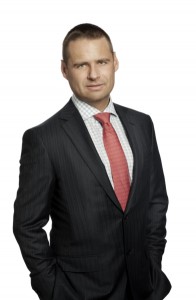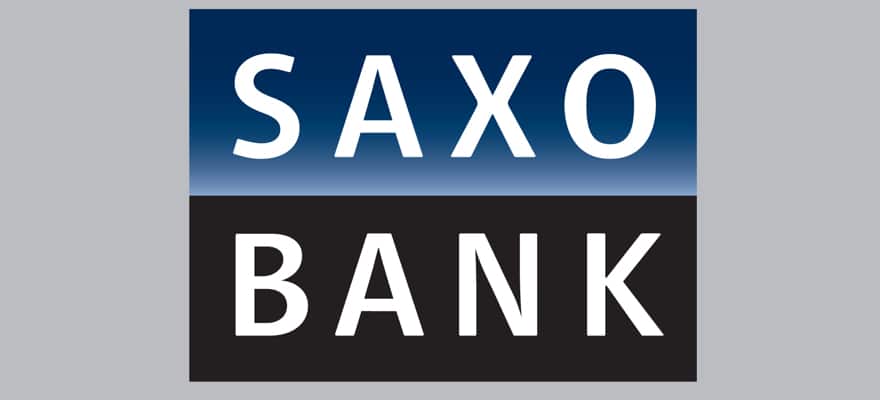
Saxo Bank Founder and co-CEO Kim Fournais
Forex Magnates’ reporters spoke to the co-CEO of Saxo Bank, Kim Fournais, about the performance of the company in 2014 and the challenges it faced in the aftermath of the Swiss National Bank’s decision to stop guarding the 1.2000 exchange rate floor in the EUR/CHF currency pair.
Mr. Fournais spent a good deal of his career in the financial sector occupying a number of positions – he established Saxo Bank with Lars Seier Christensen in 1992 under the name Midas. Mr. Fournais headed Midas alone until 1995, when Seier Christensen joined as co-CEO. In 2001, Midas attained European bank status and was officially renamed Saxo Bank. His full length interview can be read below.
1. What have been the biggest growth regions for Saxo Bank in 2014?
Switzerland, the Nordic region and South-Western Europe. But we have seen a nice growth of clients and client deposits in most regions. We believe that going forward most regions represent major growth opportunities for Saxo Bank.
2. Collateral deposits continued to grow at a steady pace, what are the trading products in which clients of Saxo are most interested in?
Looking at private clients only, equities as an asset class saw the highest number of trading clients in 2014, followed by FX. 2014 was actually the first year that we had more clients trading equities as an asset class, which illustrates that our multi-asset product offering has become a key differentiator for Saxo Bank.
When it comes to the number of trades, FX had the highest, followed by CFDs. Looking at all clients, including private, direct institutional, White Label clients etc., equities as an asset class also saw the highest number of trading clients in 2014.
3. How has your stock options business kicked off, and how do you plan to develop it going forward?
The Stock Options business has had a strong growth since the launch in May 2014 and now represents 35% of the Listed Options business. We expect Stock Options to represent 70% of the Listed Options business by the end of 2015. The 2014 revenue on Listed Options was up 80% compared to 2013 and in 2015, year to date, revenues on Listed Options are up 94% compared for the same period in 2014.
In order to grow the business, we expect to add more Stock Options on our platform in the coming months and to have 700 Stock Options by the end of 2015 and 3,000 Stock Options by the end of 2016 across US, Europe and Asia-Pacific. It’s an important initiative for Saxo Bank because it also illustrates our multi-asset product offering.
4. What are the main factors behind 2014 being the most profitable year for Saxo since 2011?
A focused approach to retaining clients and attracting new clients combined with an uptick in market volatility and trading activity. I would say that the continued rise in client’s collateral deposits shows the strength of our business model and is a clear sign of trust and confidence in the bank. This combined with a growing number of clients trading across multiple asset classes has been very important for our growth.
5. What’s in store for 2015? How does Saxo plan to grow its business in the new year and are you willing to share with us any new product offerings which we might expect this year?
Saxo Bank’s core business is online trading and investment in multi-asset products for private and institutional clients and we will continue within the core business areas to invest in improving the products, platform and service offering, as well as improving our competiveness to enable the bank to provide good trading and investment opportunities for clients.
6. Last year you took special charges close to $46 million at the time, related to a CFD trade at one of your white labels. Did Saxo manage to recover some of those losses?
I can’t go into detail but we have written off the rest of the potential loss in 2014. (According to the Annual Report by Saxo Bank, which was released today it totals to another $16.5 million (DKK 116 million))
7. After the SNB debacle, Saxo Bank raised FX margin requirements for your clients across the board – how has that impacted trading volumes in FX?
The margin changes have had an impact on some clients’ trading activity, but overall the impact has been limited. Clients of Saxo Bank are not generally here to get the most aggressive leverage possible and we cannot really recommend to anyone to leverage their positions.
We do, on the contrary, recommend that our clients diversify into more asset classes and do not use too much leverage. We have seen this before after a shock like that on January 15. Investors tend to be more cautious. I think investor sentiment and lower volatility have contributed to lower FX trading volumes in February, but March so far looks encouraging.
8. What steps are Saxo Bank taking to prevent future occurrences like the one we saw on January 15th from damaging the financials of the company?
What we have been focusing on is making sure that our risk models are dynamic and robust. Robust Risk Management increases confidence in trading rather than deter investors from trading. We have been open and honest about this and I believe that is why we have seen a fresh inflow of new clients, with clients’ collateral deposits at a record-high in February. Risk management is essential in this business and I am sure most people have learned some lessons on how to optimize this going forward.
We did warn against this and raised margins up to 8% in September, but even that was not enough. After the biggest move in any major currency one can expect Liquidity to dry up, especially when price levels have been held in a narrow range in a peg. Investors want and should diversify their risk and our multi-asset approach works to our advantage in this environment.
9. Do you have clarity about what portion of the negative balances owed to Saxo is recoverable?
We have made our own assumptions and many clients have already compensated their outstanding balances, and shown willingness to find amicable solutions to their debt. For some of our clients, we know their payment settlement will take longer, but we are of course working on that.
10. There have been reports about clients of Saxo filing lawsuits against the company due to the execution of their trades on Jan 15th, is there any legal basis for that?
No, what happened is unfortunate, but we acted in the correct way and in line with market practices. Clients should trade on their own risk, not ours. This was a unique and extraordinary situation as there was no reliable liquidity in CHF pairs in the interbank market. It’s a sad and unfortunate situation for everyone involved, but we are on strong legal grounds and it’s my clear impression that clients understand that too.
11. With the proceeds from the notes sale being committed to covering the losses post SNB, are you planning another issue?
Our capital position helped us withstand the extreme market impact of the events of January 15 and most investors appreciate that. We are always looking to optimize our capital position but do have the capital we need for now.
12. What about going public, is that an option which Saxo Bank’s management/board have been considering?
Saxo Bank has a solid foundation for an IPO and that remains to be the default longer-term plan but it’s not a priority right now.

















